Have you ever noticed an unexpected symphony emerging from your basement, the low hum, and occasional clank disrupting the quiet of your home?
It’s the boiler, a staple in many households, yet a common culprit of noise pollution.
This brings us to the question that many homeowners grapple with: Can you soundproof a boiler?
The answer is not only a resounding ‘yes,’ but also a revelation that the path to a peaceful home doesn’t have to come at the expense of your comfort.
This article will serve as your comprehensive guide to transforming your noisy boiler into a silent provider of warmth.
Let’s dive into the world of soundproofing, where practical solutions meet innovative techniques to create the serene home environment you deserve.
What Is A Boiler And Can A Boiler Be Soundproofed?

In the realm of home heating and comfort, a boiler stands as a central figure, tirelessly working to heat water and provide warmth through radiators or underfloor heating systems.
Its operation is pivotal during the colder months, ensuring a steady supply of hot water and maintaining a cozy indoor atmosphere.
Yet, despite its indispensable role, a boiler can sometimes become a source of unwanted noise, disrupting the tranquility of a home environment with a range of sounds from mild humming to persistent clanking.
Therefore, Yes, a boiler can be soundproofed, and soundproofing a boiler is not merely a luxury but a necessity for many seeking solace in their homes.
The endeavor to silence a noisy boiler involves applying materials and techniques designed to absorb, dampen, or block the sounds emitted.
These materials include but are not limited to, dense insulation panels, anti-vibration mounts, and acoustic barriers.
Employed correctly, they can dramatically reduce the acoustic footprint of a boiler, making it virtually imperceptible during its operation.
One must consider, however, that the effectiveness of soundproofing a boiler is contingent upon several factors.
These factors include the type of boiler, the frequency and type of noise it produces, and the physical context in which it is situated.
Moreover, any effort to muffle the noise must be undertaken with a careful eye on the boiler’s performance and safety requirements.
Airflow, for instance, is crucial for a boiler’s efficient operation and must not be impeded by soundproofing materials.
It is a delicate balance to strike, ensuring that the boiler remains a silent servant rather than a noisy nuisance.
The materials chosen for the task must withstand high temperatures and be non-flammable to prevent any fire hazards.
Furthermore, they should be resilient enough to endure the vibrational forces at play.
The installation process itself demands a methodical approach, ensuring that every panel or barrier is precisely positioned to offer maximum sound attenuation while still allowing for the necessary maintenance access and ventilation.
When executed correctly, the soundproofing of a boiler can lead to a significantly quieter living space.
The once persistent drone of the boiler’s operation fades into the background, allowing the rhythms of daily life to proceed with minimal auditory interruption.
This quieting of the mechanical heart of a home’s heating system can contribute greatly to the overall ambiance and comfort of the living space.
What Is A Boiler Cupboard And Can A Boiler Cupboard Be Soundproofed?
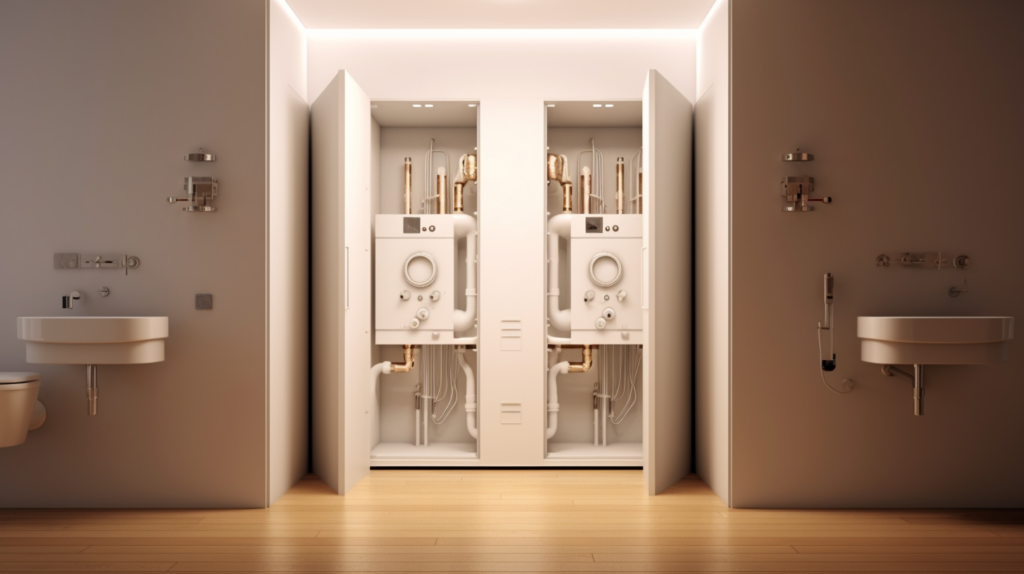
The concept of a boiler cupboard is simple yet strategic, providing a dedicated space where the boiler can operate out of sight and, ideally, out of earshot.
Often tucked away in basements, utility rooms, or even kitchen corners, these cupboards serve a dual purpose:
concealing the boiler to maintain the aesthetic appeal of a home and isolating it to minimize noise pollution.
The design of a boiler cupboard is typically straightforward, featuring doors for access, a sturdy frame, and enough space to accommodate the boiler and its associated plumbing.
The prospect of soundproofing a boiler cupboard introduces a compelling solution to the problem of boiler noise.
Through the strategic application of sound-absorbing materials within the cupboard’s structure, the transmission of noise can be effectively curbed.
The process involves lining the walls, door, and even the ceiling of the cupboard with materials that can absorb the vibrations and muffle the sound.
Materials such as acoustic foam, mass-loaded vinyl, or specially designed insulation panels are often utilized for their sound-deadening properties.
However, as with the soundproofing of the boiler itself, the modification of a boiler cupboard must be approached with a full understanding of the boiler’s operational requirements.
Adequate ventilation must be preserved to allow for the safe dispersion of heat and maintain air quality.
In addition, there must be enough space for maintenance and inspection activities, ensuring that the boiler remains accessible for routine checks and repairs.
It is a careful balancing act—enhancing the quietness of the boiler’s operation without compromising its safety or functionality.
In undertaking the soundproofing of a boiler cupboard, one must also be cognizant of the materials’ durability and suitability for the temperature variations that they will be exposed to.
They must adhere firmly to the surfaces within the cupboard, forming a seamless barrier that can withstand the daily operations of the boiler.
The end result is a boiler cupboard that not only hides the mechanical components from view but also significantly reduces the auditory impact of the heating system.
What Noise Does A Boiler Generate

The symphony of sounds a boiler generates can be as varied as the many models and makes that exist in homes and businesses alike.
Humming may arise from the electric pump circulating water, while buzzing could be the result of electronic components at work.
However, not all sounds are harmonious. Thumping or banging, known as kettling, suggests boiling water within the system, often due to a build-up of limescale or similar debris.
These disruptive noises can turn the serene sanctuary of a home into a place of unwanted disturbance.
Identifying the cause of boiler noise is a critical first step in addressing it. A hissing sound may indicate a gas leak, which is a serious safety concern, while gurgling could point to trapped air in the system.
Each sound has its diagnostic value, revealing the health and efficiency of the boiler.
Recognizing whether a sound is a benign feature of normal operation or a distress signal for maintenance helps in taking the appropriate action.
Regular servicing by a qualified technician can mitigate many of the common noises before they become a nuisance.
What Properties To Look For In A Good Soundproofing Material
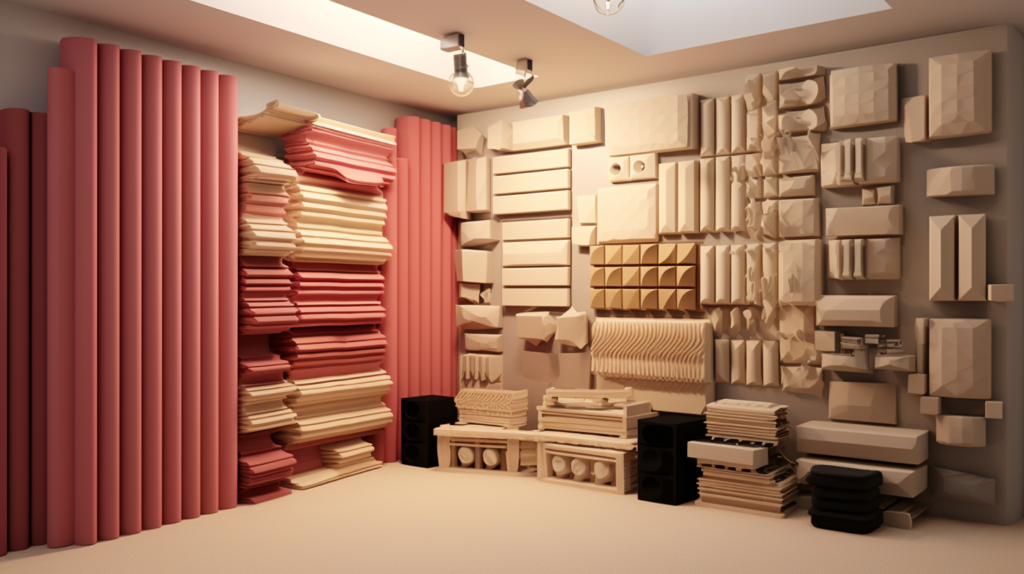
When selecting soundproofing materials, one should look for those that exhibit key acoustic properties.
Density is crucial; a dense material impedes the path of sound waves more effectively than a lighter one. The material’s ability to dampen, that is, to dissipate the energy of the sound waves, is equally important.
Additionally, the property of decoupling, where the material can prevent sound from transferring through structural components, is highly sought after.
Materials that possess these qualities are varied, ranging from dense foam panels to specialized soundproofing compounds.
Acoustic foams work by trapping sound waves in their complex structures, while mass-loaded vinyl adds weight and density to surfaces, impeding the transmission of sound.
Furthermore, products like acoustic sealants can be used to fill gaps and crevices, further isolating the boiler from the surrounding environment.
The advantages of using these materials go beyond noise reduction; they can also contribute to thermal insulation, creating a more energy-efficient home.
How To Soundproof The Boiler Itself
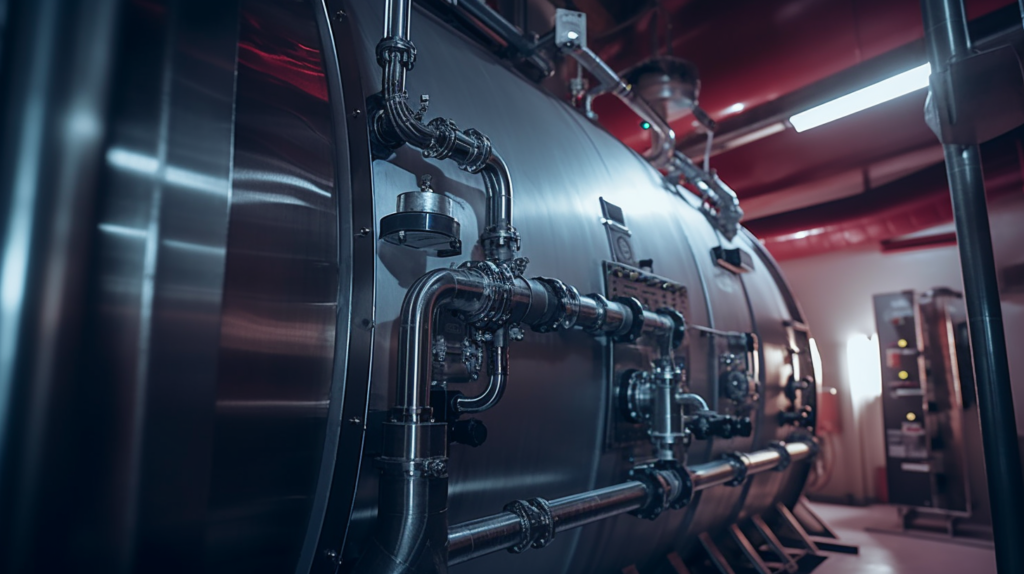
Soundproofing a boiler is a task that requires meticulous attention to detail and a comprehensive understanding of the unit’s operation.
The application of sound-deadening sheets, such as those made from viscoelastic materials, can absorb and dissipate the vibrations that contribute to noise.
These sheets must be cut to size and applied to the boiler’s exterior, taking care to avoid covering any important controls, vents, or maintenance access points.
The challenge lies in applying these materials in a way that is secure and durable, given the heat and humidity that boilers often operate within.
High-temperature adhesives may be required to ensure that the materials remain in place without degrading over time.
It’s also essential to maintain a clear pathway for maintenance technicians to access the boiler for inspections and repairs.
The end goal is a boiler that operates quietly and efficiently, its noise well-contained by the soundproofing measures put in place.
How To Soundproof The Boiler Cupboard
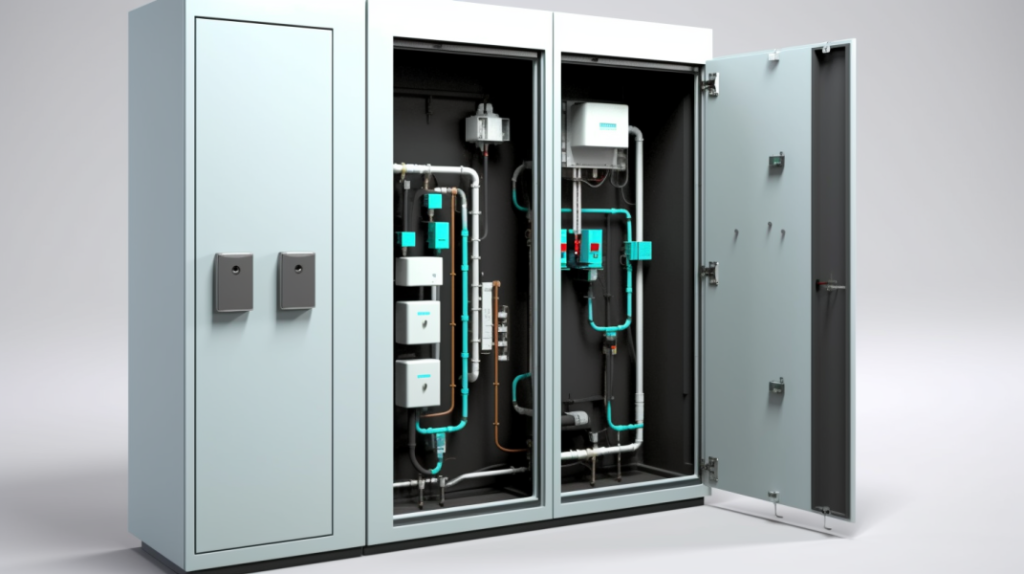
The art of soundproofing a boiler cupboard transcends mere placement of materials; it requires an understanding of how sound interacts with surfaces and spaces.
Soundproofing panels, such as those made from Nitril butadiene rubber, offer high density and mass, making them excellent at absorbing the sound energy that emanates from a boiler.
To fit these panels, one must measure the cupboard’s interior meticulously, accounting for any irregularities in shape or obstacles such as pipes or wiring.
Once the panels are cut to the exact dimensions, they are installed against the cupboard’s walls, ceiling, and door, ensuring complete coverage.
Special attention is paid to the seams and joins where different panels meet, as these can be potential weak points for sound leakage.
Adhesive used to secure the panels needs to be strong enough to hold the weight and resilient enough to endure the temperature fluctuations typical in boiler operation.
The result is a cocoon of silence, enveloping the boiler and significantly reducing the noise that escapes into the living space.
Sealing And Weatherstripping Boiler Cupboard For Noise Isolation
With soundproofing panels in place, the next step is to ensure that every potential gap and opening is sealed.
Weatherstripping is the unsung hero in this process, often made from flexible materials like rubber or foam, which can compress to fill spaces and create an airtight seal.
It is carefully applied to the edges of the boiler cupboard door, around any openings for pipes, and along any other joints in the cupboard’s structure.
The application of weatherstripping is both a science and an art, requiring precision and patience.
It must be snug enough to prevent sound from escaping but not so tight as to hinder the door’s operation or the expansion and contraction of the cupboard’s materials with changes in temperature.
Proper sealing contributes significantly to the overall soundproofing effectiveness, making the boiler’s operation barely noticeable to the home’s occupants.
Maintaining Accessibility And Safety
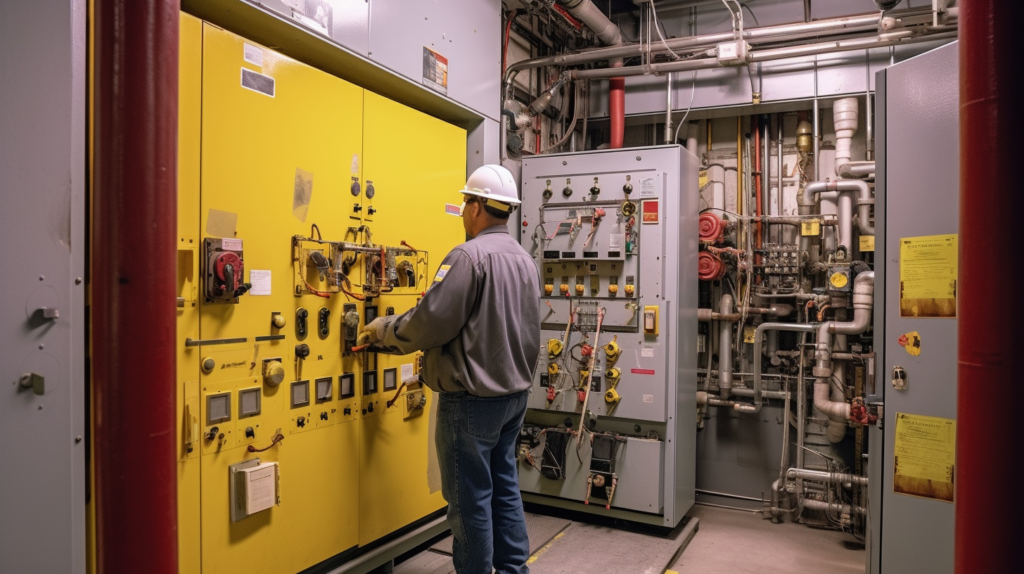
The convergence of soundproofing with accessibility and safety is paramount.
Every measure taken to reduce noise must also consider the boiler’s operational integrity and the necessity for regular maintenance.
Panels and seals must be installed in such a way that they do not block or hide essential components of the boiler.
Access points for servicing, emergency shutoffs, and inspection panels must remain readily accessible to ensure that the boiler can be safely and efficiently serviced.
Safety is never to be compromised for the sake of silence. All materials used in the soundproofing process must be non-combustible and rated for high-temperature exposure.
Regular inspections of the soundproofing setup are necessary to check for any signs of wear or potential safety hazards.
Over time, adjustments may be required to maintain the integrity of the soundproofing, ensuring that it continues to provide noise reduction without becoming a liability.
Conclusion
In conclusion, the journey to a quieter home through the soundproofing of boilers and boiler cupboards is one that requires careful consideration and precision.
From understanding the various noises a boiler can produce to selecting the appropriate materials and ensuring a meticulous installation, every step is crucial in achieving a serene living environment.
The balance between noise reduction and maintaining the boiler’s functionality and safety is delicate but attainable with the right knowledge and approach.
With the methods outlined, homeowners can enjoy the benefits of a warm and comfortable home without the disruption of boiler noise.
It is clear that through thoughtful soundproofing efforts, the boiler can indeed be transformed from a potential source of disturbance to a silent provider of comfort, proving that peace and warmth can coexist seamlessly within the modern home.
